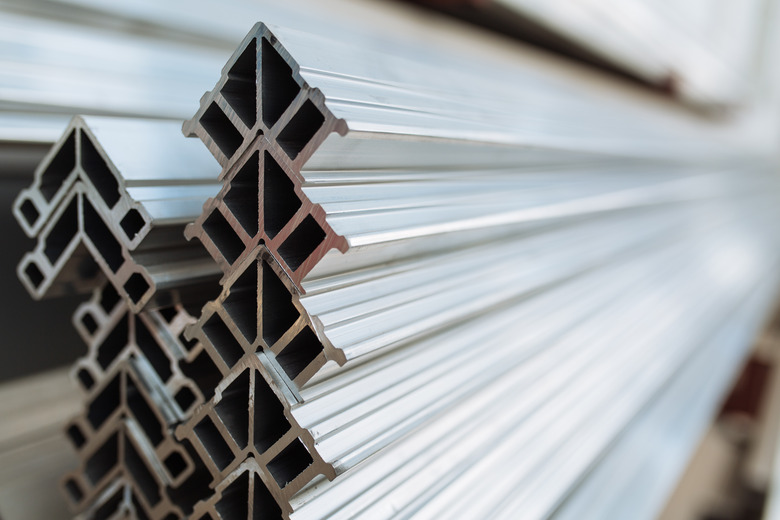Aluminum Vs. Steel Conductivity
In physics, the term "conductivity" has several meanings. For metals such as aluminum and steel, it generally refers to the transfer of either thermal or electrical energy, which tend to be closely correlated in metals, since the loosely-bound electrons found in metals conduct both heat and electricity.
Thermal Conductivity
Thermal Conductivity
Thermal conductivity, the ability of a material to conduct heat, is normally measured in watts per kelvin per meter. ("Watt" is a unit of power, typically defined either as volts times amps or joules of energy per second. The "kelvin" is an absolute unit of temperature, where zero kelvins is absolute zero). Materials with good thermal conductivity transmit large amounts of heat quickly, such as the fast-heating copper bottom of a cooking pot. Poor thermal conductors carry heat slowly, such an an oven mitt.
Electrical Conductivity
Electrical Conductivity
Electrical conductivity, the ability of a material to conduct current, is normally measured in siemens per meter. ("Siemens" is a unit of electrical conductance, defined as 1 divided by ohms, where an ohm is a standard unit of electrical resistance). Good electrical conductors are preferred for wiring and connecting. Poor conductors, called insulators, create a safe barrier between live electricity and the environment, such as the vinyl insulation on an extension cord.
Conductivity in Aluminum
Conductivity in Aluminum
Pure aluminum has a thermal conductivity of about 235 watts per kelvin per meter, and an electrical conductivity (at room temperature) of about 38 million siemens per meter. Aluminum alloys can have much lower conductivities, but rarely as low as iron or steel. Heat sinks for electronic parts are made of aluminum due to the metal's good thermal conductivity.
Conductivity in Carbon Steel
Conductivity in Carbon Steel
Carbon steel has a much lower conductivity than aluminum: a thermal conductivity of about 45 watts per kelvin per meter, and an electrical conductivity (at room temperature) of about 6 million siemens per meter.
Conductivity in Stainless Steel
Conductivity in Stainless Steel
Stainless steel has a much lower conductivity than carbon steel: a thermal conductivity of about 15 watts per kelvin per meter, and an electrical conductivity (at room temperature) of about 1.4 million siemens per meter.
Cite This Article
MLA
Inglehart, James A.. "Aluminum Vs. Steel Conductivity" sciencing.com, https://www.sciencing.com/aluminum-vs-steel-conductivity-5997828/. 13 March 2018.
APA
Inglehart, James A.. (2018, March 13). Aluminum Vs. Steel Conductivity. sciencing.com. Retrieved from https://www.sciencing.com/aluminum-vs-steel-conductivity-5997828/
Chicago
Inglehart, James A.. Aluminum Vs. Steel Conductivity last modified March 24, 2022. https://www.sciencing.com/aluminum-vs-steel-conductivity-5997828/
